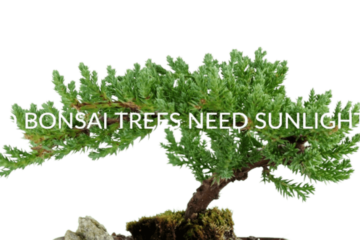Bonsai trees are living works of art that require care to grow and maintain. One aspect of this is trimming, which can be done in a number of ways. The best way to get started is to read the basics, such as the bonsai tree tools you need and when and how to trim a bonsai tree. There are also general guidelines for different bonsai plants, so you can get a better idea before starting your own tree.
When you cut or trim a tree, it is important to understand that it will have consequences for the future. Trimming your bonsai tree is essential for the plant to stay healthy, look its best and grow properly. However, most bonsai tree will grow well if pruned during their active growing season.
Pruning a bonsai tree can also be the most challenging part. Heavy trimming will make your tree lose its basic shape and appearance; Too little trimming allows disease or pests to invade the area.
Here are some tips on how to trim a bonsai tree.
Why is bonsai tree trimming important?
Content Overview
Before we get into bonsai pruning techniques, it helps to know how your tree grows. Then, by learning, you will understand how to trim a bonsai tree species efficiently.
A natural tendency most trees have is that they grow to an apical prominence. Thus, the central stem is dominant over the lateral stems. So, for example, when you look at the main trunk of a branch, it is more dominant than the side branches.
Thus, it allows the plant to grow taller and not have to compete with other plants for light. As the tree grows to the top and outer edges, the lower branches die back. As a result, the above begin to grow out of proportion. You will end up with undesirable characteristics of your bonsai tree.
With this knowledge, you know how you can use your trim to help combat those effects. This is because the main stem has dominant growth and you need to prune the outer and upper parts thoroughly.
Doing this forces the plant to begin redistributing growth to the bottom and interior giving you control over plant growth and design.
What are the benefits of shaping?
Shaping your bonsai will allow you to achieve a number of beautiful shapes that will help bring out the beauty of your plant. These common types of plants are known to live for hundreds of years, so it is essential that you know how to properly care for them and shape them into any desired shape.
Different ways of bonsai tree trimming
There are hundreds of different types of bonsai trees and they all require different types of pruning. It’s important to remember that the size you want to achieve will dictate how you trim your bonsai. However, a few different methods can be used to shape these trees, including:
Cascade – Forms one side of the plant as the trunk spreads toward the ground at an angle. This type of shape is common in large fallen trees.
Semi Cascade – This type of tree is created when you prune certain parts to make it grow in any desired direction. The stem forms one side of the plant as it approaches the ground but is not completely parallel. This is often done on trees that are very tall and do not need to display their full height.
Oblique – This type of bonsai shape shows a tree with its trunk leaning to one side. It will often appear that the tree is falling towards the ground, but this is actually an illusion created by pruning.
Broom – The lower part of the plant is trimmed to look like a broom or fan. This type of bonsai is known for overgrowth and long branches that require regular pruning.
Formal Upright – This shape is achieved by keeping the trunk straight and tall. It usually has stems that grow sideways and leaves that point upwards towards the sky.
Informal upright – This shape provides a more natural look and more leaves on the branches. It has a central trunk that is taller than its branches.
Windswept – This shape has a straight trunk that grows in one direction. The branches face at a downward angle, giving it the appearance of being buffeted by a strong wind.
How to trim of a bonsai tree?
When it comes to pruning bonsai trees, there are several techniques you need to know to get the best possible results. Depending on what you want to achieve and the condition of your bonsai, you may be able to cut different branches or apply a specific trimming technique.
Before starting any type of layoff, three important factors will determine how much you should give up:
- Age of bonsai tree
- Its health
- Overall appearance
By evaluating these factors, you will be able to prioritize what needs to be cut.
Steps to Step How to Trim a Bonsai Tree
Step 1: Ensure plant health by looking at the overall health of your bonsai. This will allow you to determine which types of branches need to be pruned or are dead or dying. Once you’ve identified these parts, tear them off with your fingers to keep the plant strong and healthy.
Step 2: Pinch the ends of the branches if you want to shape them in a certain direction. Use your fingers to pinch off as much as needed for your particular bonsai shape and continue pinching until the desired shape is achieved. This will force new growth, allowing you a plant that has a nice curve or bend depending on its orientation.
Step 3: Trim off any dead or dead leaves and branches with sharp scissors. Make sure not to pluck too much at once; Otherwise, you can damage the plant. Trimming is the only thing your plant needs to stay healthy and strong. By following these steps every few weeks, your bonsai should stay healthy and grow comfortably.
Step 4: Shape your bonsai using techniques like tying or bending. You can twist the branches in the direction you want them to grow to achieve a specific shape. This is useful when you have a formal upright bonsai and want it to be slightly more slanted in one direction. Use twine to tie branches to pieces of wood to achieve this shape.
Step 5: Cut your bonsai leaves after a season or two of growth. Leaves are pruned to make your bonsai tree more beautiful. You can cut off two thirds of the leaves and the plant will grow new leaves within a few weeks.
This is where you can cut some small and delicate leaves of your bonsai to give it a compact shape. Removing these leaves redirects energy within the plant to other areas such as branch growth. You can also cut the new end of a branch using your scissors, allowing for faster regrowth and more leaves.
Step 6: Rinse your bonsai with water to remove any dust or dirt that may have built up on the leaves. This helps keep it clean and beautiful while ensuring you are giving your plant the best care possible. Follow this step every time you trim your bonsai to avoid damaging it with excess dust, dirt or chemicals.
Read More : The Ultimate Guides How to Trim a Japanese Maple
Bonsai pruning and care techniques
Basic pruning
This type of cutting is the most basic trimming technique you can use to maintain your bonsai tree by trimming one or more branches every time you notice they are not growing properly or producing leaves.
Maintenance pruning of bonsai tree
The goal of maintenance pruning is to help a tree stay healthy. This is done by maintaining and refining the shape of the bonsai tree. Trimming a bonsai tree is important to maintain its compact shape and encourage growth in desired areas. If you don’t trim your plants, they will concentrate most of their energy on one side and at the top. It doesn’t look good.
It is important to cut some branches so that they are close to each other. However, a healthy bonsai tree must encourage growth near the inside of the plant.
When should a bonsai tree be pruned?
Maintenance pruning for outdoor bonsai trees can be done throughout the growing season, usually from March to September. Indoor bonsai trees can be pruned throughout the year.
How should I do bonsai maintenance pruning?
Trim crossed and broken branches
Proper maintenance pruning is essential to keep your bonsai in good condition. Maintenance pruning is the process of removing branches or shoots that have exceeded their size limit.
When you want to keep your bonsai beautiful, make sure there are no crossed or broken branches. You can use bonsai branch cutters if the topaz branches (branches) are crossed or broken. Just make sure these cutter head types will fit the tool properly before purchasing them as other styles may cause damage. You can do this with pruning shears, regular cutters, clippers, etc.
Remove all weeds and dead wood or leaves
Benefits include reduced leaf volume, which increases exposure to sunlight. This is especially helpful if growing indoors where space doesn’t always allow for total height growth without planting nearby. Also, leaves pulled out of place over time can cause brown spots. It is more common in tropical temperatures.
Prune the twigs, so that they have only 3-4 nodes
To keep your bonsai plant healthy, cut off the branches of a plant, which have only 3-4 nodes. The joints that protrude are called “nodes”. If you see 6 or more nodes on a branch, consider it for a future pruning session because it’s time to reduce their size! Cut the tree cleanly just above the node. Use a sharp tool such as clippers,scissors or shears. It helps plants grow bigger and better.
Pinch pine trees and some conifers
Avoid cutting pine trees and some conifers with scissors. Instead, pinch them with your hands. Using scissors, shears or shears to cut conifers can cause the leaves to turn brown and die.
Hold the shoot between your thumb and finger so you can gently pull it off. It should snap at its weakest point, giving an easy escape if something gets stuck there! Different species of plants require extra care. You may want to prune some plants and pinch others. Some even require a combination treatment.
However, it is best to use bonsai tools for this type of work as they are specially made to handle small plants without causing too much damage! Don’t be afraid! Regularly cutting back dead wood helps distribute growth more evenly within a plant during dense foliage development.
Structural Bonsai Tree Trimming
To give your tree a distinctive shape, you need to trim the larger branches. It’s best to decide which branches you want to keep and which to remove. Although not easy to choose, the action is irreplaceable but helps define the look.
The best time to do structural pruning is in early spring or late fall before the growing season begins. Furthermore, pruning differs from one tree to another. For example, trim is different from ficus bonsai and juniper bonsai.
To trim your bonsai tree structure, you need to place it on a table at eye level. Start by removing all the dead branches and then look closely at the tree to see which branches you want to remove to get the desired effect.
Light structural trimming
This is something you do when your tree is growing well and producing rich new growth. It is a process of cutting certain sections to increase light penetration in the center, creating a more even canopy. You can use this technique once every year to keep the tree growing healthy in the right direction. But, if you notice that they are not growing properly or producing leaves, then follow the initial trimming.
What to consider when trimming a bonsai tree
Observe whether it is ready for trimming
If you want to trim your bonsai tree, you should do it when it is growing really well and looking bushy. When you can easily count the number of leaves on your bonsai tree, it’s time to wait until it’s healthy.
Timing Matters
It is interesting to note that you can prune your bonsai tree more than twice a year. What matters is all the time. It is essential to evaluate whether your bonsai needs pruning or not. Generally, in late winter or early spring, significant pruning is best. This is when the plant is not active and can take proper care of itself.
Be careful not to trim too much at one time
It is always better to prune your bonsai tree a little at a time instead of cutting it all at once. It’s good to remember that plants, like humans, need some time to recover after being cut. Also, they don’t immediately produce new growth inside. Heavy pruning can seriously damage and kill your tree.
Trim branches instead of removing them
It’s okay to trim overgrown branches of your bonsai tree, but removing them completely will ruin its shape. So instead it is better to cut some leaves or twigs and shorten them.
Choose the Right Tools for trimming bonsai tree
Be careful when choosing the right cutting tool for bonsai. To protect both yourself and your plants, it is extremely important to use tools specifically designed for plants. A good pair of pruning shears is best, but other options include hand pruners or pruning shears. Use a reliable and sharp bonsai shear to trim your bonsai tree. If the edge of the bonsai clipper is not sharp enough, it may tear the bark or damage the leaves.
Read More :Bonsai Clippers Vs Bonsai Scissors -Which Is Best For Trimming Your Bonsai Tree and Why?
Cut at a 45-degree angle
The best time to trim your bonsai tree is when it is growing. Trim your tree in the right direction, but do not cut any growth flush with the trunk. Instead, always cut at a 45-degree angle so you preserve the maximum amount of bark and bark tissue while preventing scarring.
Cut the branches to no more than 1/3
One of the essential things about cutting back is knowing how far you have to go. Pruning is necessary for your bonsai tree to survive, but don’t cut too much from it at once. It is best if you follow these rules for pruning your bonsai tree. If you have a healthy tree, up to 1/3 of its leaves can be cut off.
Conclusion
Bonsai is an art. The artist trims and shapes the tree to create their own look. The goal of pruning is to ensure that your tree stays the same shape as it grows. This is the task of pruning your bonsai tree to keep it looking healthy and beautiful. It removes old leaves, dead branches, or any other part that interferes with the proper growth of the plant.
It is possible to provide excellent bonsai tree care without being a professional. With the right tools and patience, you should be able to do your own pruning without too much trouble. Follow these steps and techniques to create a healthy and beautiful bonsai tree full of life.
Whether you do it as a hobby, for educational purposes, or as a tree maintenance requirement in your landscaping business, we hope this blog post has given you some valuable knowledge on getting started with bonsai tree pruning.


